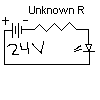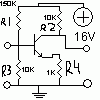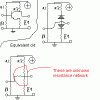Ednamosa
New Member
Hi Guys, I am getting some problems in followings
1> Can you Define an Electric Charge. Please don't describe it by an example.
2> I have a battery of 24V and an unkown resistance is connected in series with a led. The circuit is series and simple. What is the formula to calculate resistance that should be keep to turn the led on.
1> Can you Define an Electric Charge. Please don't describe it by an example.
2> I have a battery of 24V and an unkown resistance is connected in series with a led. The circuit is series and simple. What is the formula to calculate resistance that should be keep to turn the led on.



